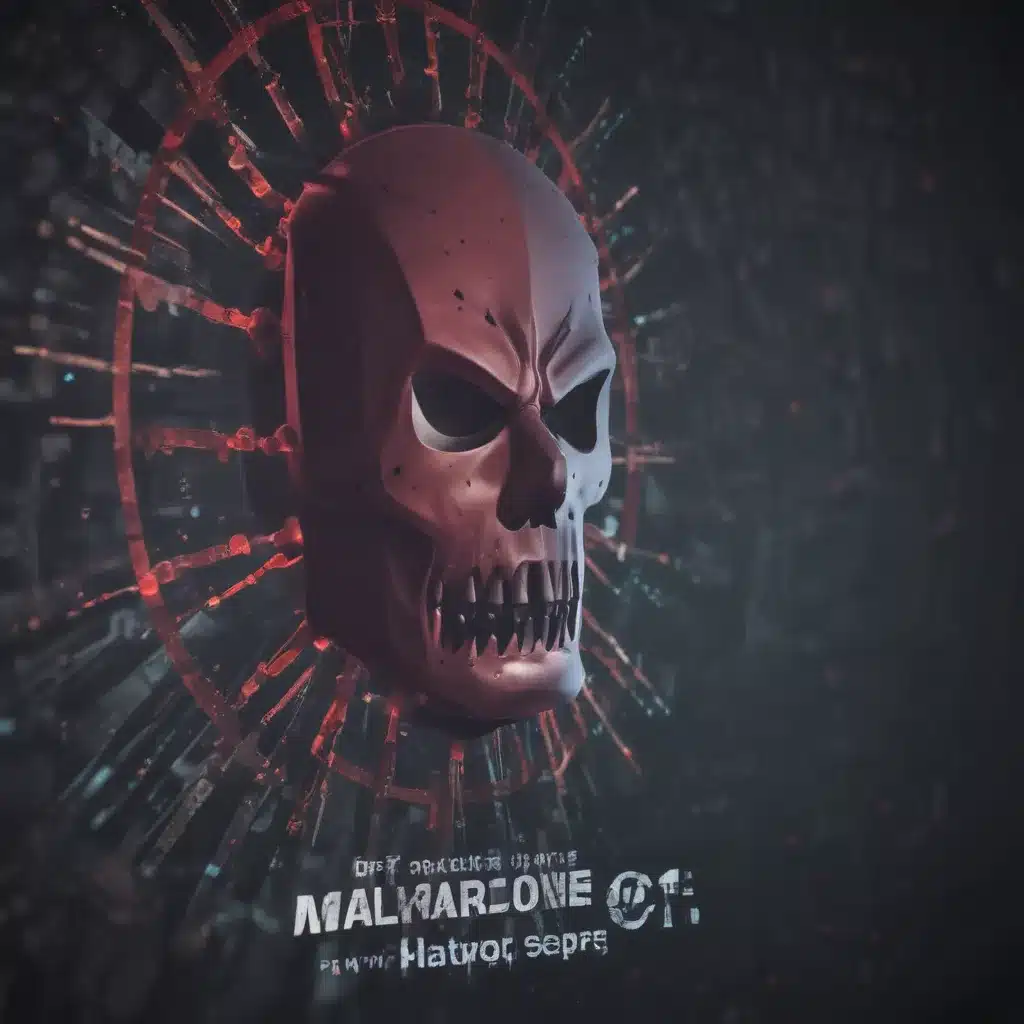The Invisible Enemies Lurking in Your System
Imagine this scenario: You’re a small business owner, proudly running your computer repair shop in the heart of London. One day, a frantic customer rushes in, laptop in hand, eyes wide with panic. “My computer’s been hacked! All my files are encrypted, and they’re demanding a ransom!” Your heart sinks as you realize the dreaded enemy – malware – has struck again.
Malware, the silent assassins of the digital world, are constantly evolving, finding new ways to infiltrate our systems and wreak havoc. As a computer repair expert, I’ve seen my fair share of these cyber threats, and let me tell you, they’re not an easy foe to vanquish. But fear not, my fellow tech warriors! In this article, we’re going to dive deep into the world of malware detection, arming you with the knowledge and tools to identify and neutralize these invisible enemies before they can cause any lasting damage.
Unmasking the Malware Menace
Malware, short for “malicious software,” is a broad term encompassing a wide range of harmful programs designed to infiltrate, damage, or gain unauthorized access to computer systems [1]. From sneaky Trojans and stealthy rootkits to the notorious ransomware that holds your data hostage, these digital threats come in many shapes and sizes, each with its own unique methods of attack.
But what sets malware apart from your everyday software glitches? The key lies in its malicious intent. Malware is specifically crafted by cybercriminals to exploit vulnerabilities, steal sensitive information, or disrupt the normal operation of a system [2]. And the scariest part? These threats are constantly evolving, adapting to bypass even the most robust security measures.
Detecting the Devious: Staying One Step Ahead
In the ever-changing landscape of cybersecurity, the battle against malware is a constant game of cat and mouse. As security experts, we need to be vigilant, proactive, and armed with the right detection strategies to stay ahead of these digital adversaries.
One of the most crucial aspects of malware detection is understanding the various attack vectors these threats can exploit. From phishing emails and compromised websites to vulnerabilities in outdated software, malware can sneak in through a multitude of entry points [3]. By keeping a close eye on these potential pathways, we can deploy layered security measures to intercept and neutralize the threats before they can gain a foothold in your system.
But detection is just the first step. To truly safeguard your network, you need to dive deeper, uncovering the hidden tactics and techniques used by these malicious actors. This is where advanced threat hunting and analysis comes into play. By examining the behavioral patterns, file signatures, and network activity associated with known malware strains, we can develop comprehensive detection rules that can identify even the stealthiest of threats [4].
Empowering Your Security Arsenal
As a computer repair professional, you’re on the frontlines of the battle against malware. But you don’t have to face this challenge alone. There are a wealth of tools and resources available to help you strengthen your security posture and keep those pesky digital invaders at bay.
One of the most powerful weapons in your arsenal is a robust endpoint detection and response (EDR) solution. These advanced security platforms provide deep visibility into your system’s activities, allowing you to quickly detect, investigate, and respond to even the most sophisticated malware threats [5]. By integrating EDR with your security operations center (SOC), you can leverage real-time threat intelligence and automated incident response to stay one step ahead of the bad guys.
But the fight against malware isn’t just about technology. It’s also about empowering your users to be the first line of defense. By implementing comprehensive security awareness training, you can educate your customers on the latest phishing tactics, the importance of software updates, and the red flags to watch out for when it comes to suspicious online activity [6]. After all, a well-informed user is the best defense against the ever-evolving tactics of cybercriminals.
Staying Vigilant in a Changing Landscape
As the digital landscape continues to evolve, so too do the threats that lurk within it. Malware is a constantly shifting enemy, and staying ahead of the curve requires a multi-faceted approach that combines cutting-edge technology, deep threat analysis, and a proactive security mindset.
By leveraging the power of EDR, threat hunting, and user awareness, you can build a formidable defense against the invisible enemies that threaten the integrity of your customers’ systems. And as a computer repair expert, you have the unique opportunity to be the hero, the trusted advisor who guides them through the treacherous waters of cybersecurity.
So, the next time a frantic customer rushes through your door, laptop in hand, don’t let the malware menace catch you off guard. Be ready, be vigilant, and be the guardian of your community’s digital well-being. Together, we can turn the tide against these invisible adversaries and keep the tech world safe, one repair at a time.
[1] Lenaerts-Bergmans, B. (2023, February 22). Living off the land (LOTL). CrowdStrike. https://www.crowdstrike.com/cybersecurity-101/living-off-the-land-attacks-lotl/
[2] Baker, K. (2023, April 17). Malware Analysis: Detecting and Mitigating Threats. CrowdStrike. https://www.crowdstrike.com/cybersecurity-101/malware/malware-analysis/
[3] “Malware 101: Detection and Remediation.” Barracuda Networks Blog, 21 Dec. 2023, blog.barracuda.com/2023/12/21/malware-101-detection-remediation.
[4] “Top Five Detection Data Sources.” ReliaQuest, 30 May 2024, www.reliaquest.com/blog/top-five-detection-data-sources/.
[5] “Cybersecurity 101: Identifying and Responding to Threats.” SentinelOne, www.sentinelone.com/cybersecurity-101/.
[6] “Top Detections for Malware and Ransomware.” ReliaQuest, 30 May 2024, www.reliaquest.com/blog/top-detections-for-malware-and-ransomware/.













